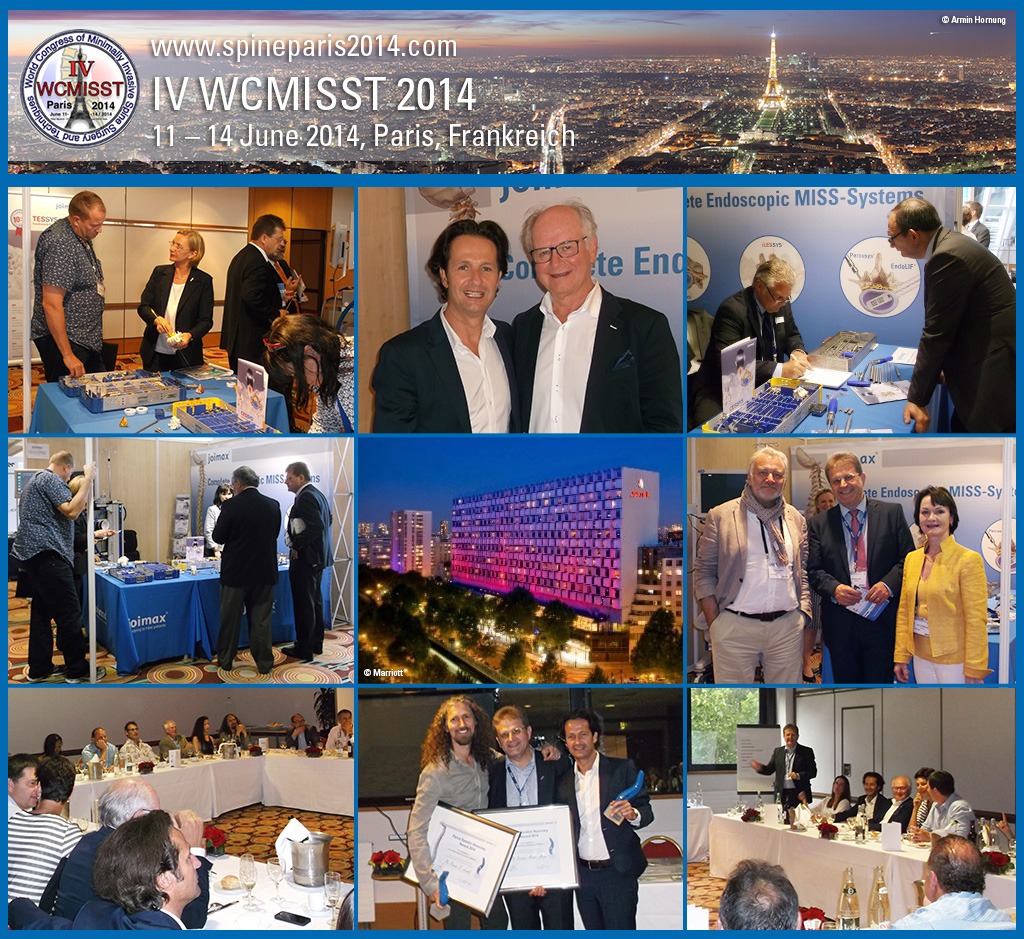Karlsruhe, 11.06.2014. joimax® looks back on 10 years of success with the surgical application of TESSYS® for the minimally invasive, endoscopic removal of herniated discs; a particularly gentle surgical technique which utilizes the natural transforaminal access to the spinal canal. TESSYS® was the first product that brought joimax® to market and was a breakthrough for the company. Today, joimax® offers a highly diversified product portfolio for 360° surgery in almost all areas of the spine including endoscopic and percutaneous stabilization.
During the award ceremony in Paris, two TESSYS® pioneers will be awarded with the “Parviz Kambin Honorary Award”: Dr. Florian Maria Alfen of Würzburg, who bought the very first TESSYS® system in 2004 and has successfully operated on more than 2,500 patients. As a member of the joimax® Faculty Team, Dr. Alfen has trained a large number of surgeons. The second award winner is Dr. Daniel Laich of Chicago. He is the very first TESSYS® user in the U.S. and has been a faculty member since 2009. Since 2013, he has also been operating as a scientific advisor for the company.
Since 2004, more than 100,000 patients in 30 countries were surgically treated with the TESSYS® method and its subsequent surgical developments. Follow-up studies show a significantly shorter recovery time, faster return to work and normal activities with improved quality of life and ultimately, lower costs to the social system.
At the WCMISST, the 4th World Congress of Minimally Invasive Spine Surgery and Techniques, joimax® presents its latest development- the EndoLIF® system for endoscopic stabilization of the lumbar spine. Aside from fully endoscopic access via the proven TESSYS® and iLESSYS® methods, the EndoLIF® system contains an O-Cage for oblique interbody fusion. In addition, joimax® presents its new Percusys® System- a posterior, percutaneous screw and rod system. The advantages of these products and procedures are apparent:
– Smooth, atraumatic access due to gentle dilation of tissue
– Dura and nerves are protected by the working tubes
– Dorsal bone structures are generally not affected and remain intact
– O-Cage with an osteo-conductive surface provides the optimum substrate for cellular growth
– Posterior, percutaneous stabilization via the minimally invasive screw and rod system
Both of these systems are CE marked and FDA clearance is in progress.
Visit us at WCMISST, booth #15 at the Marriott Rive Gauche Hotel and discover for yourself the many advantages of our newest systems.
